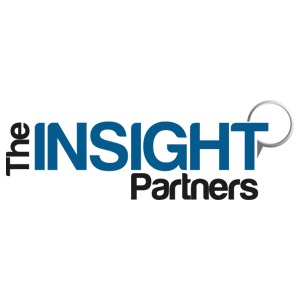Health & Safety Industry Today
Remote Cardiac Monitoring Market Accelerates with AI Integration and Telehealth Expansion
New York, US – October 23, 2025 — According to The Insight Partners, the Remote Cardiac Monitoring Market is experiencing robust growth, driven by rising cardiovascular disease prevalence, technological advancements, and increasing acceptance of telehealth solutions. This evolution reflects a larger shift toward preventive, patient-centered care, empowered by real-time data and remote patient engagement.
Revolutionizing Cardiac Care Through Connectivity
Remote cardiac monitoring allows healthcare professionals to track critical heart metrics in real-time, using wireless devices that send data to clinical platforms for assessment and intervention. These systems include wearable ECG trackers, mobile telemetry devices, and implantable loop recorders that enable clinicians to detect arrhythmias, fluctuations in blood pressure, or irregular heartbeats early, often before symptoms become life-threatening.
The rise in mobile health technologies, combined with widespread internet access, has made remote cardiac monitoring a key part of modern healthcare systems. This technology has been especially important for elderly or high-risk patients managing chronic heart conditions. It offers continuous analysis that helps reduce hospital readmissions and improve treatment options.
Get Sample PDF: - https://www.theinsightpartners.com/sample/TIPRE00024441
AI-Powered ECG Monitoring Fuels Market Development
Remote cardiac monitoring has evolved from a supportive tool to a predictive healthcare solution with the incorporation of artificial intelligence (AI). These days, complex heart rhythm data is instantly analyzed by AI-powered electrocardiogram (ECG) platforms, giving doctors useful information for early intervention. A 2025 market report claims that AI-enabled remote ECG monitoring is developing quickly as machine learning models improve diagnostic accuracy and automate the detection of irregular rhythms, enabling quicker clinical reactions.
These developments guarantee precise, real-time diagnosis across distant regions and are backed by cloud-based telemedicine platforms. Remote ECG monitoring is a key component of future cardiac care innovation since it offers greater levels of efficiency, accuracy, and accessibility as healthcare providers use AI algorithms built into connected devices.
Telemedicine's Ascent and Post-Pandemic Momentum
The industry for remote cardiac monitoring is still being shaped by the momentum created during the COVID-19 pandemic. In order to provide critical and preventive care during this time while reducing hospital overcrowding and infection risk, healthcare systems mainly relied on remote monitoring technologies. Since then, telehealth adoption rates have stayed high, establishing remote cardiac monitoring as a common procedure in the treatment of chronic illnesses.
Access to specialized cardiovascular care has also become more accessible thanks to telemedicine. Cardiologists can now consult with patients in remote or underserved areas by sending real-time cardiac data for expert review; this model improves clinical outcomes and cuts down on diagnostic delays. This cooperation between patients and medical professionals is further strengthened by the ongoing development of telehealth platforms.
Drivers of Market Growth
The global growth of remote cardiac monitoring is being driven by a number of structural factors:
• The need for preventive monitoring solutions has increased as a result of the rising prevalence of cardiovascular diseases brought on by sedentary lifestyles and aging populations.
• Wearable technology advancements improve the comfort, usability, and data-richness of remote monitoring. These days, devices have improved battery efficiency, cloud integration, and continuous tracking.
• As governments and private insurers realize the long-term cost savings from early intervention, adoption is accelerating due to rising healthcare spending in both developed and emerging countries.
• Effective care coordination between hospitals and distant patients is being promoted by integration with digital health ecosystems, such as cloud-based diagnostic dashboards and smart wearables.
Get Buy Now: - https://www.theinsightpartners.com/buy/TIPRE00024441
Top Applications and Technologies
The market for remote cardiac monitoring includes a broad range of device types, including implantable recorders, smartwatches, and small patches. Because they can produce precise, long-term health data, continuous monitoring devices are widely used.
Examples of use cases include:
• Telemetry and remote ECG monitoring for the identification of arrhythmias.
• Post-operative patient care, where ongoing monitoring promotes healing.
• Monitoring of chronic cardiac conditions, such as heart failure and hypertension.
• Integration with home healthcare systems, which gives patients the ability to take care of chronic illnesses under supervision from a doctor.
Industry Cooperation and Innovation
To improve connected cardiovascular solutions, major medical device manufacturers are collaborating with AI startups and digital health firms. For example, providers are able to identify early disease indicators and automate physician alerts thanks to developments in predictive analytics and cloud-based ECG data interpretation. Significant gains, such as fewer readmissions and quicker clinical decision-making, have been reported by healthcare systems that use predictive models.
These partnerships are also making remote cardiac care more widely available globally. As part of national e-health initiatives, governments are funding digital transformation projects that include wearable cardiac devices and investing in telemedicine infrastructure.
Prospects for the Future and Sustainability
The market for remote cardiac monitoring is anticipated to closely follow the larger digital health movement as technology advances. More individualized monitoring systems are probably in the future, powered by AI algorithms that can predict cardiac events and suggest interventions in real time. Transparency, interoperability, and patient empowerment will be further improved through integration with IoT-based healthcare ecosystems and electronic health records.
Additionally, remote cardiac monitoring's sustainability fits with global healthcare trends that aim to lower hospital dependency, save costs, and encourage preventive wellness. The use of AI-enabled cardiac monitoring is a significant step toward more intelligent, patient-centered cardiac care as healthcare systems continue to place a high priority on accessibility and efficiency.
Contact Us:
If you have any queries about this report or if you would like further information, please get in touch with us:
Contact Person: Ankit Mathur
E-mail: ankit.mathur@theinsightpartners.com
Phone: +1-646-491-9876
Also Available in: Korean German Japanese French Chinese Italian Spanish
Share on Social Media



Other Industry News
Ready to start publishing
Sign Up today!








